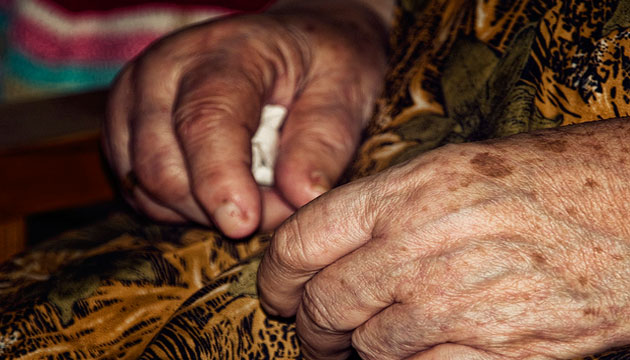Covid 19 has made the unthinkable happen. In a matter of a few weeks most countries have closed their borders to foreign nationals, frozen air travel, and locked down their economies.
The much touted era of globalization has all of a sudden ended and Trump is threatening a trade war with China.
While borders have never been open fully open to migration except under the auspices of regional integration agreements like the EU, the past three decades have seen millions of workers crossing borders annually as some countries allowed the temporary entry of construction workers, plantation workers, housekeepers, medical and other health professionals, IT technicians, and others to fill up labour shortages.
Filipinos were among the largest participants in their “guest worker” programs and the Philippines has often been cited as having the best developed infrastructure, both private and public, for organizing their movements.
Before COVID 19 struck, close to 2 million Filipino men and women (locally referred to as overseas Filipino workers or OFWs) left the country “each year” to take up a new or to resume an existing employment contract in the Middle East, in other countries in East and Southeast Asia, in North Africa, in Europe, in Canada and the US. These yearly flows, passing through legal channels, included some 370,000 seafarers who were hired to man and operate ocean-going cargo ships or to serve on board cruise liners, some 60,000 professionals and technical workers, and 70,000 technicians and other skilled factory and construction workers.
All these workers out migration abruptly ended by mid March 2020. Instead of overseeing the outmigration of their workers, the Philippines and other origin countries were faced with the challenge of having to bring home their nationals who lost their jobs or were stranded abroad for one reason or another. By mid June the Philippine Department of Labour and Employment estimated that about 340,000 OFWs have already been temporarily laid off or permanently lost their jobs abroad due to Covid 19. These are understandably “guestimates” based on responses of Philippine diplomatic missions in major destination countries who were asked to provide quick estimates, but the scale of the lay-offs was huge by any measure. How many more will lose their jobs before the pandemic is brought under control is anyone’s guess but the depth of the global economic depression already suggest that recovery in hiring will not happen for many months, if not years, to come.
For many Filipinos, the collapse of the international market for migrant labour will have dire consequences. In 2018 the Philippines was estimated to have received close to $34 billion in migrants’ remittances. According to the 2018 National Migration Survey, the largest ever conducted in the Philippines, 9 percent of households in the country have at least 1 member who was out of the country at the time of the survey and 12 percent have or had an OFW member. Each of these households depend heavily on these hard-earned remittances to meet their basic food needs and other necessities, for the education of their children, and for their medical requirements. Their spending, in turn, benefits others in their communities who produce the food and other consumables, provide transport, construct the houses, and attend to their medical needs. There have been attempts to assess the overall impact of remittances on reducing the incidence, depth and severity of poverty in the Philippines and although there are qualms about the methodology the general conclusion is that they have been significant.
What will happen to remittances will depend on the number of OFWs who will remain in employment abroad despite the pandemic and the lockdown measures taken by governments in countries where they work. The records of the Philippine Overseas Employment Administration, the agency that regulates OFW deployment, indicate that they are employed in over 100 countries all over the world, from Tonga in the South Pacific to Cote d’Ivoire in West Africa, but the large majority are in the Gulf States. They are also employed in a very wide range of occupations from medical doctors, software engineers, and ship captains, to domestic workers, transport and construction workers, and oil drillers. Since many countries of employment do not report the number of foreign workers by nationality most estimates of the number of OFWs are of dubious accuracy. In 2016 Filipinos living in the OECD (or the club of rich countries) were estimated to number some 3.5 million, up from 1.9 million in 2000, and these include non-working spouses, children in school, and retired parents and grandparents. In non-OECD countries, the top 5 destination countries (Saudi Arabia, UAE, Hong Kong, Kuwait, and Taipei) were reported to be employing some 2.3 million OFWs in 2018.
President Duterte was recently quoted to have said that he expects the return of over 100,000 OFWs which, if proven true, represents only about 5 percent of the number who left in 2019. So far the number of returning OFWs that are quarantined upon arrival do not represent a much higher number than the usual numbers who return in normal times. This raises a number of questions. Are most of OFWs escaping from the impact of the global economic crisis brought by the pandemic and are able to hold on to their jobs? Is this because the occupations they perform are considered vital or have many been actually laid-off but are managing to stay on in their countries of employment only through the generosity of others? But some features of Philippine migration offer more hopeful signs. It is very likely that those performing critical jobs in hospitals and long-term care homes are managing to remain employed. While workers in cruise ships and others in the tourist industry are likely to be laid off, those working in construction, public transport, public sanitation, plantations, and domestic services are also likely to retain their jobs.
Emergency fiscal measures to support employment will be a factor. Some rich countries like the US, Germany and Canada have offered to subsidize the payroll of employers who keep their employees, although many firms have still been forced to shut down due to the lockdown measures. What is interesting however is that there is increasing recognition of the key role played by migrant workers during this pandemic. In the EU 13 % of all “key workers” to the pandemic are mobile workers from within and from outside the Union. [1] Those from outside the EU represent 17 % of all mining and construction workers, 25 % of cleaners and helpers, and 14 % of personal care workers. In the US plantation workers from Mexico continued to be employed even if all others have been temporarily barred from entry. The German Government is supporting its farmers by paying for the transport of plantation workers who come every season to harvest crops.
____________________
[1] Defined to include a range of skills from the high skilled (e.g. doctors or medical researchers) to low skilled occupations (e.g. refuse workers or drivers).
The volume and direction of OFW migration have largely been shaped by the policies of the destination countries, although conditions in the Philippines do contribute to the final outcome. What is likely to be different this time is the importance of domestic conditions. A worrying aspect of the pandemic is that a severe disruption in the Philippine economy will force many to seek escape through migration, by whatever means. According to the latest Labour Force Survey some 7.3 million Filipinos are now out of work. From 41.8 million in April 2019 employment dropped to 33.8 million in April 2020. Of those employed, 13 million reported having a job but were not at work. The biggest drop was suffered by service workers (1.6 million lost their jobs) followed by elementary occupations (1.6 mil) and by craft and related trades workers (1.22million). As many as 1.4 million managers lost their jobs, so did 307,000 professionals and 451,000 technicians.
Will the Philippine economy re-bound to give these people some means to support themselves and their families? If not, will those with few skills seek opportunities abroad even at the risk of using people smugglers? How will the Philippine migration infrastructure survive, or adjust, to this emerging situation?
Manolo Abella, a Filipino economist, was formerly the Director of the International Migration Programme of the International Labour Office (ILO) and a member of the Advisory Board of the Centre for Migration Policy and Society (COMPAS) at the University of Oxford. He has been actively involved in international efforts to develop a multilateral framework for the management of labour migration and spent many years writing and rendering advice to governments on policies and best practices. He is at present working on what various academic disciplines have to offer to improve the governance of migration, and how this knowledge can best be organized for the training of policy-makers.













